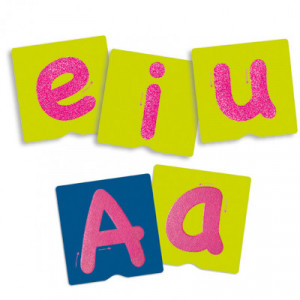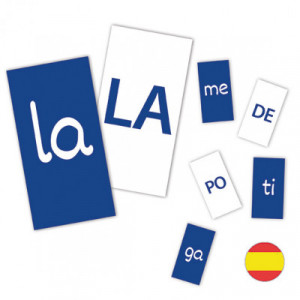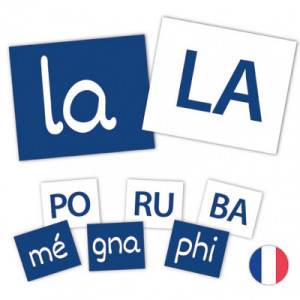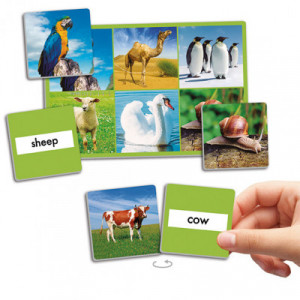Reading and writing disorder (Dyslexia)
Dyslexia is a learning disorder that makes it difficult to acquire reading and writing persistently and meaningfully. It is presented without physical, psychological or socio-cultural alterations that justify it.
Playgrounds for children with dyslexia should encourage literacy learning, work on psycholinguistic development, allow learning the letters from different senses, and provide ways to associate images with words.
The following games will help children with dyslexia to work on both reading and writing and will also allow them to develop memory, auditory and sensory discrimination, right-left differentiation, and space-time orientation. Remember that choosing the right games will depend on each child's specific learning needs and characteristics.

Lecto-bits cards with phonetic syllables for learning to read and improving reading skills
Logo-bits cards with all the consonant clusters for improving pronunciation according...
Lecto-bits de syllabes simples pour soutenir la parole et améliorer la lecture
Logo-bits de capacité articulatoire pour corriger la prononciation selon le point...
The best exercises to work on dyslexia
The games and activities are designed so that the child can associate letters with their sounds in a playful environment that encourages motivation. Variations in the games will keep children from getting bored and keeping their attention.
It is essential to stimulate children's phonological awareness. Its exercise is based on the children learning to distinguish the different phonemes and their associated spellings in the form of letters and syllables. Parents can contribute to strengthening therapy at home by playing with their children in the family. The most effective games are those that improve vocabulary, memory and attention.
The child must develop a love of reading. Parents can encourage that enthusiasm through stories and books that are appropriate for their child's maturity level. In its range of educational games, Akros offers stories with audio CDs for interactive reading. This activity, carried out as a family or as a family, strengthens emotional ties and improves the child's abilities.
Treatment for childhood dyslexia
A dyslexic child's intelligence is normal, and even bright, if he or she receives the appropriate stimuli. The child understands the coding of the written language in a different way and has difficulty processing the arbitrary rules that link letters and their corresponding sounds. Their repetitive memory often fails and they may need successive explanations of how to write certain words. The treatment of dyslexia focuses on the discrimination of spelling and letter sounds.
Any dyslexic child can perform successfully in the classroom through early detection and individualized treatment. Dyslexic children often suffer from low self-esteem because they feel they are different from other children. Regardless of the strategy outlined for therapy, parental support and understanding is the cornerstone for the child to gain self-esteem and confidence in the treatment and its potential for improvement.
The emotional restraint of a dyslexic child by his parents means that he feels supported, never pampered or pampered. The child's strongest points should be enhanced by some hobby to vent his frustration. The channeling of anxiety leads to an improvement in the child's self-image.





























































